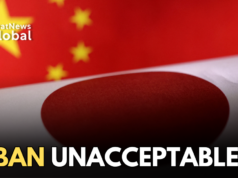Myanmar is in turmoil. Since the 2021 military coup, the country has fractured into a chaotic battleground of state forces and armed ethnic resistance. Border regions have become ungoverned spaces—fertile ground for insurgent groups, including anti-India factions like ULFA-I and NSCN-K offshoots. With Myanmar’s junta barely holding on and China expanding its influence, regional powers, including India, are being forced to reassess their strategies.
Recently, reports emerged of a high-precision strike on insurgent camps along the India-Myanmar border—possibly involving over 150 drones. While India has officially denied involvement, the operation’s sophistication suggests otherwise. It comes amid growing frustration in New Delhi over repeated cross-border attacks by insurgents and the Myanmar regime’s inability—or unwillingness—to act.
To understand this evolving picture, StratNewsGlobal spoke with Nilanthan Niruthan, Executive Director of the Centre for Law and Security Studies in Colombo, who offers a sharp, strategic take on the situation.
According to Niruthan, the groups targeted in the strikes are not the main insurgent outfits but their radical breakaway factions, which oppose negotiated peace and remain ideologically hardened. These groups operate with impunity in Myanmar’s lawless frontier, exploiting the vacuum left by a crumbling state.
If India did execute the strikes, Niruthan suggests a deliberate strategy of “plausible deniability” is at play—avoiding international noise while neutralizing threats quietly.
But the bigger story is China’s deep entrenchment in Myanmar. From state actors to rebels, all sides avoid damaging Chinese assets, especially in rare earth-rich regions. Myanmar currently holds around 50% of the world’s known heavy rare earth reserves—vital to modern technology and a key reason for Beijing’s grip.
While the West watches from the sidelines, Niruthan notes that India has both hard and soft power stakes in Myanmar—civilizational ties, security concerns, and strategic connectivity via its Act East policy. In his view, India’s best long-term play may be less about firepower and more about forging deeper cultural and economic engagement—a front where China’s money can’t compete.
But for now, he warns, Myanmar’s future looks grim. “All I see in the crystal ball,” he says, “is blood.”




